Visit Ruijin: A Historic Destination for Culture and Heritage Seekers

An Essential Guide to Visiting Ruijin Republic Cradle
In This Guide
- An Essential Guide to Visiting Ruijin Republic Cradle
- The Rich History and Legends of Ruijin Republic Cradle
- Main Highlights: What You Absolutely Can’t Miss
- Planning Your Visit: A Practical Guide
- Tickets: Prices, Booking, and Tips
- How to Get There: A Complete Transportation Guide
- Local Cuisine and Accommodation Nearby
- Frequently Asked Questions
- Final Thoughts on Your Trip
Exploring the Heart of Revolutionary China: A Journey to Ruijin
Nestled in the picturesque Jiangxi Province, Ruijin is a treasure trove of history that beckons travelers with a passion for culture and a thirst for knowledge. Known as the “Cradle of the Republic,” this scenic area is steeped in the rich legacy of the early Chinese Soviet Republic, where significant events in the annals of revolution unfolded.
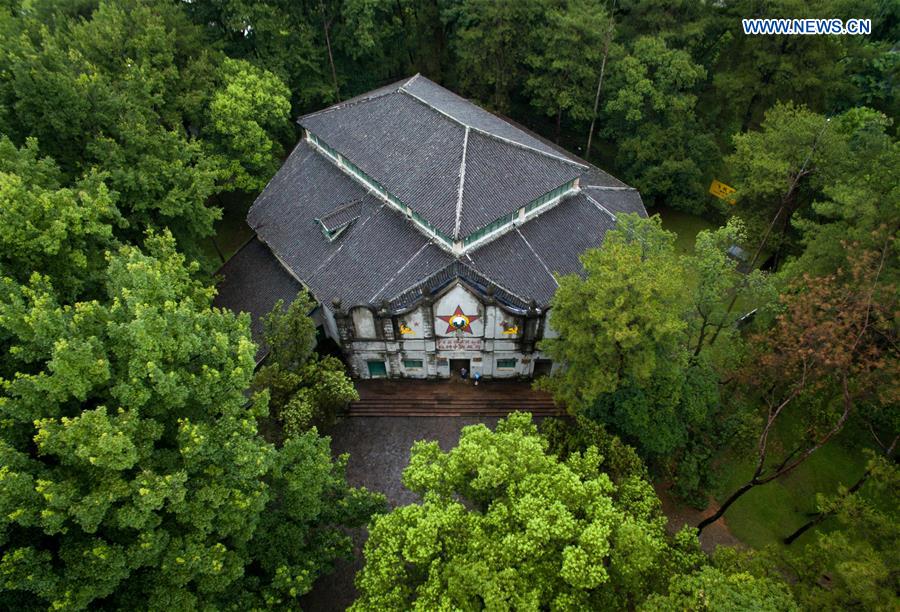
Ruijin Republic Cradle.
As one of the pivotal sites in the establishment of the People’s Republic of China, Ruijin offers an immersive experience into the struggles and triumphs of its revolutionary past. It was here, in November 1931, that Mao Zedong was elected President, marking the birth of a new political era. The remnants of this transformative period are preserved within the Soviet Site of Ruijin, which stands as a living museum of revolutionary zeal and resilience.
Visitors to Ruijin will find themselves captivated by the beautiful landscapes and the historical significance of locations like the Hongjing Revolutionary Site. With its well-maintained grounds and informative exhibits, the area provides a fascinating glimpse into the past, where one can learn about the first Communist Party government and its governance over millions of people across vast territories.
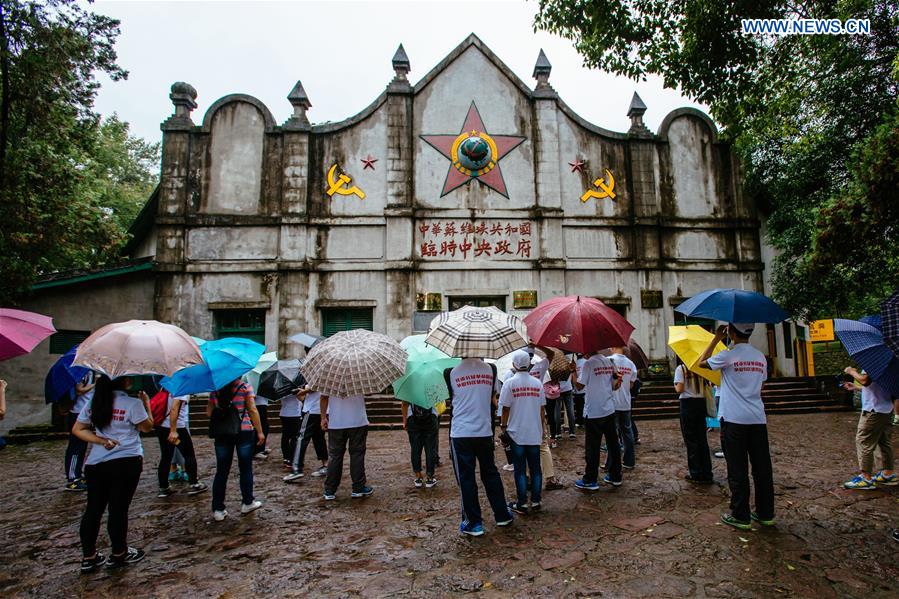
Ruijin Republic Cradle.
Highlights of your visit will include:
-
The Red Well: Experience a unique interaction with history as you partake in the age-old tradition of drawing water from this renowned well, a testament to the ingenuity and determination of the revolutionaries who once called this place home.
-
Historical Buildings and Sites: Explore the remnants of government offices, meeting halls, and living quarters that once buzzed with revolutionary fervor. Many structures are preserved in remarkable condition, allowing for a vivid connection to the past.
-
Scenic Beauty: Beyond its historical significance, Ruijin is adorned with lush landscapes and serene mountain views, making it an ideal destination for both history buffs and nature lovers alike.
Whether you are a seasoned traveler or a curious first-timer, Ruijin promises a journey that intertwines education with adventure, inviting you to walk in the footsteps of those who dared to dream of a new world. Prepare to be inspired as you delve into the heart of China’s revolutionary spirit, and uncover the stories that shaped a nation.

Ruijin Republic Cradle.
The Rich History and Legends of Ruijin Republic Cradle
Nestled in the verdant hills of Jiangxi Province, Ruijin is not just a picturesque town; it is steeped in profound historical significance as the cradle of the Chinese Soviet Republic. This region served as the epicenter of revolutionary fervor during the early 20th century, leaving behind a legacy that intertwines politics, culture, and the indomitable spirit of its people.
A Glimpse into the Past
In November 1931, Ruijin became the stage for a groundbreaking moment in Chinese history when Mao Zedong was elected as the President of the Chinese Soviet Republic. This marked the establishment of China’s first revolutionary government, which exerted control over a territory of approximately 50,000 square kilometers, home to around 3 million residents. The decisions made in this area would ripple through time, shaping the future of the nation.
Key Historical Sites:
– Soviet Site of Ruijin: This was the former site of the Central Executive Committee, where crucial decisions regarding the Chinese Communist Party’s direction were made.
– Red Well: A notable landmark where visitors can experience a piece of history firsthand by drawing water from a well famously excavated by Mao and his comrades.
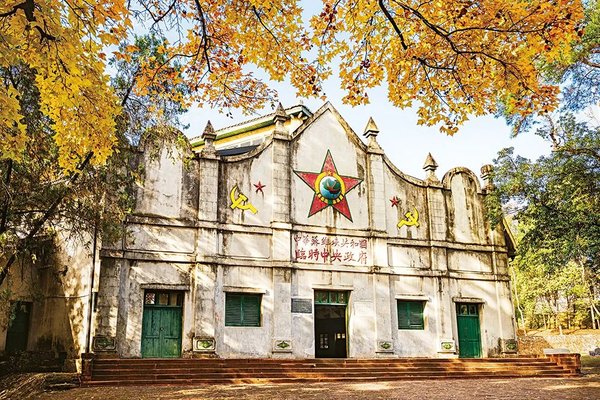
Ruijin Republic Cradle.
Legends and Folklore
The legends surrounding Ruijin are as compelling as its historical facts. One such legend speaks of the Red Well, where it is said that the water acquired mystical properties, believed to instill strength and courage in those who drank from it. Those who take the journey to draw water from this well often recount stories of feeling a renewed sense of purpose, as if connecting with the revolutionary spirits of the past.
Another tale speaks of the “Three Red Flags”, a symbol of hope and perseverance. Local lore suggests that these flags were not just banners of a party but were imbued with the dreams and aspirations of the people who yearned for equality and justice during turbulent times. The flags are said to flutter in the wind, whispering the stories of those who fought for a new dawn.
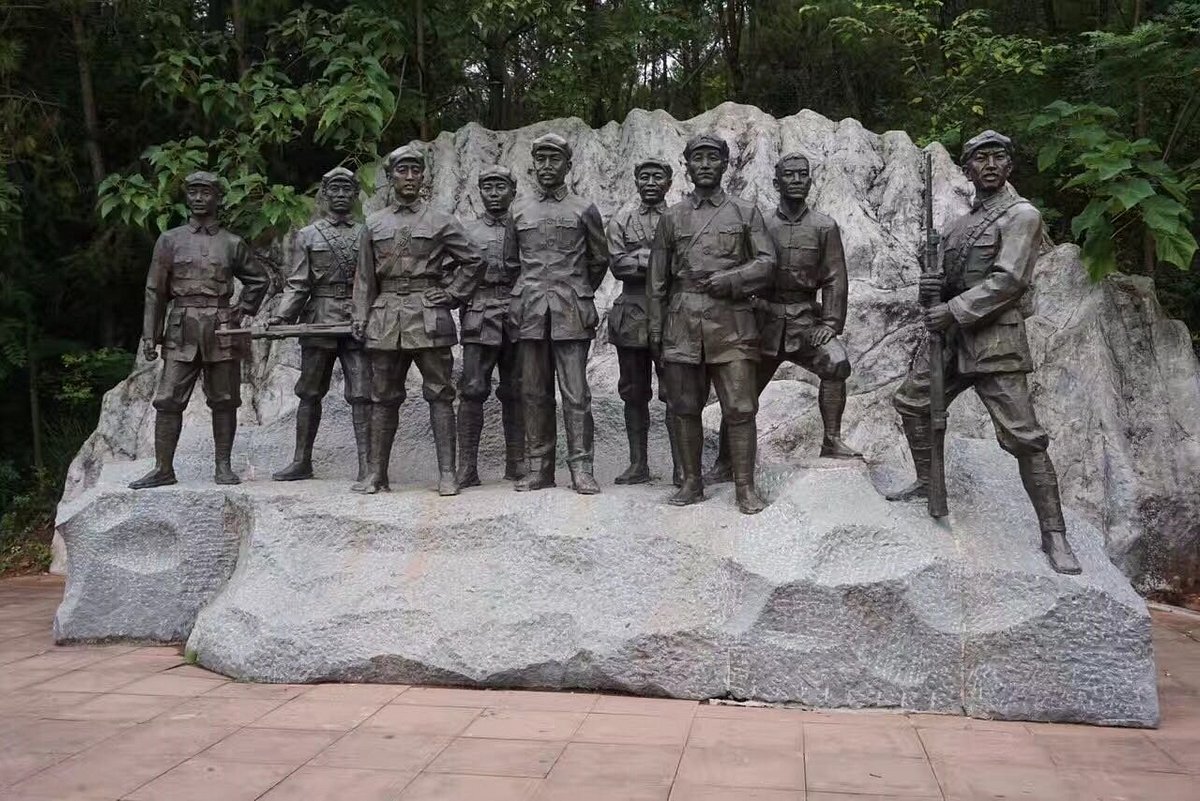
Ruijin Republic Cradle.
Cultural Significance
Ruijin is often referred to as the “Cradle of the Republic”, a title that reflects its pivotal role in the early days of the People’s Republic of China. The remnants of its revolutionary past are preserved in various sites, including the Ruijin Revolutionary Memorial Museum, which showcases artifacts, documents, and multimedia displays that narrate the struggles and triumphs of the local populace during the revolutionary years.
Visitors to Ruijin can walk through the legacy of the Chinese Communist Party’s early governance, experiencing firsthand the environment where revolutionary ideas took root. The well-preserved architecture and scenic beauty of the region add depth to this historical journey, making it not only educational but also visually captivating.
A Journey Worth Taking
For travelers interested in Chinese history and culture, Ruijin offers a unique lens through which to view the nation’s past. From the solemnity of its historical sites to the vibrant tales woven into the fabric of local life, every corner of Ruijin invites exploration and reflection. Whether you are lowering a wooden bucket into the Red Well or walking through the lush landscapes that once sheltered revolutionary leaders, you are sure to leave with a deeper understanding of the resilience and aspirations that define this remarkable area.
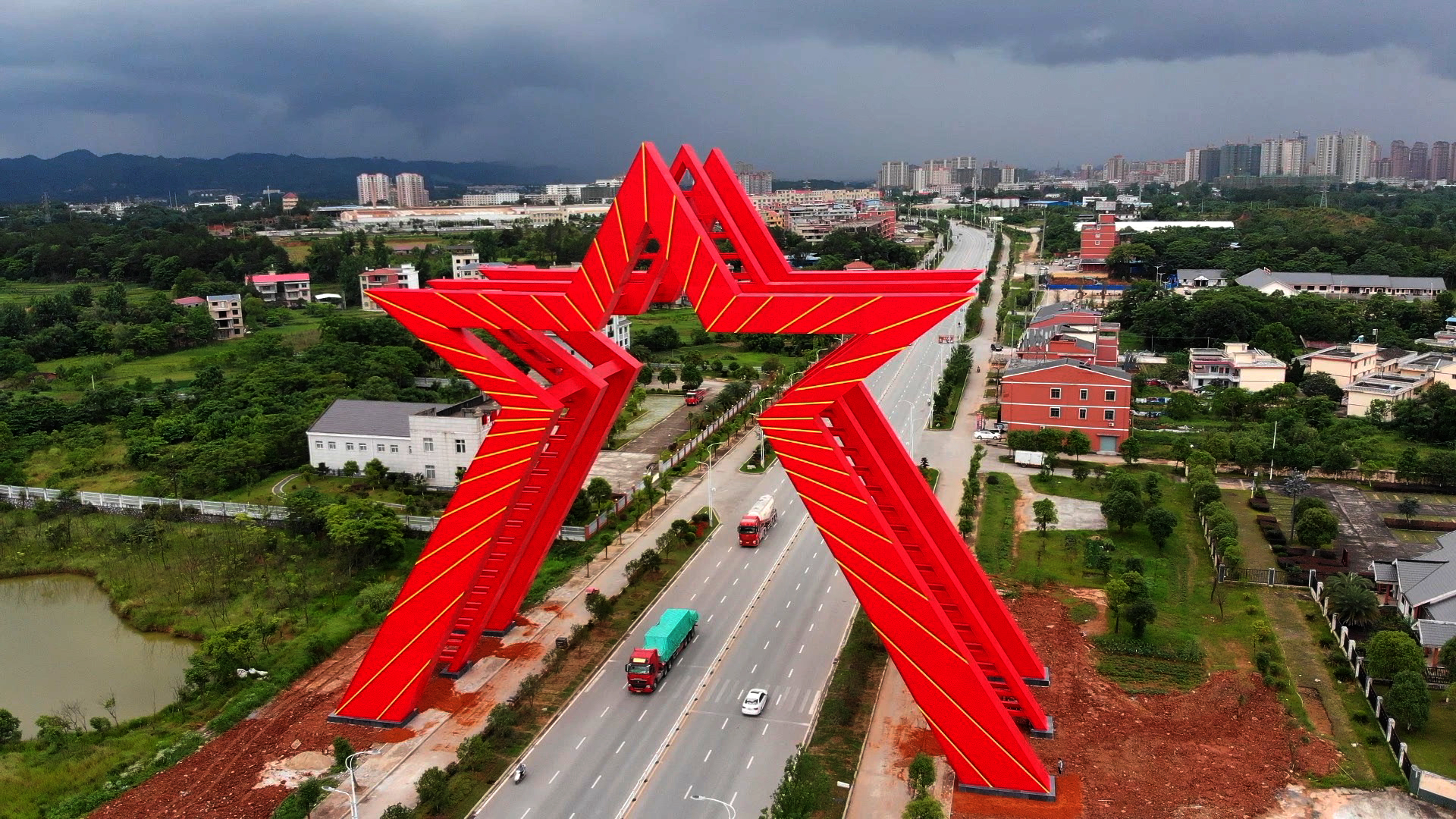
Ruijin Republic Cradle.
In sum, Ruijin is a treasure trove of history and legends, making it an essential stop for those wishing to explore the roots of modern China. As you journey through this historic cradle, you will not only witness the echoes of the past but also feel the pulse of a community that continues to honor its legacy.
Main Highlights: What You Absolutely Can’t Miss
Discover Ruijin: A Journey Through Revolutionary History
When exploring the Ruijin Republic Cradle (赣州瑞金共和国摇篮旅游区), history enthusiasts and cultural travelers alike will be captivated by the echoes of the past that resonate throughout this significant site. Ruijin, located in Jiangxi Province, is not only known for its stunning landscapes but also for its profound historical importance as the birthplace of the Chinese Soviet Republic. Here are the main highlights that you absolutely can’t miss on your visit.
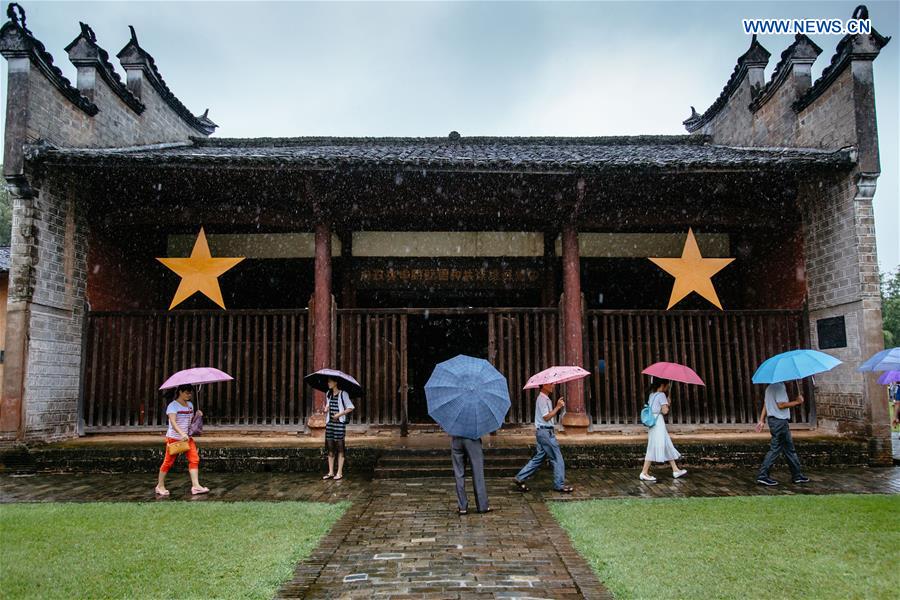
Ruijin Republic Cradle.
1. Soviet Site of Ruijin
Step into the heart of revolutionary history at the Soviet Site of Ruijin. This area served as the headquarters for the Central Executive Committee of the Chinese Soviet Republic from 1931 to 1937. Here, Mao Zedong was elected President, which marked a pivotal moment in Chinese history. Visitors can stroll through the well-preserved buildings and expansive gardens, gaining insight into the governance that once covered an area of 50,000 square kilometers and approximately three million residents.
2. Red Well (红井)
One of the most iconic symbols of the struggle for survival during the revolutionary years, the Red Well is steeped in legend. This well was known for its deep, challenging excavation during the time of the Chinese Soviet Republic. Visitors can participate in the unique experience of drawing water from the well, using traditional wooden buckets, and savoring the pure water that has quenched the thirst of many throughout history.
3. Hongjing Revolutionary Site
Located within the scenic Hongjing area, this site is a testament to the revolutionary spirit that flourished during the early 20th century. The surrounding natural beauty, combined with historical significance, makes it an enriching stop. Here, you can learn about the daily lives of those who lived and fought for change, and see remnants of their struggle against adversity.
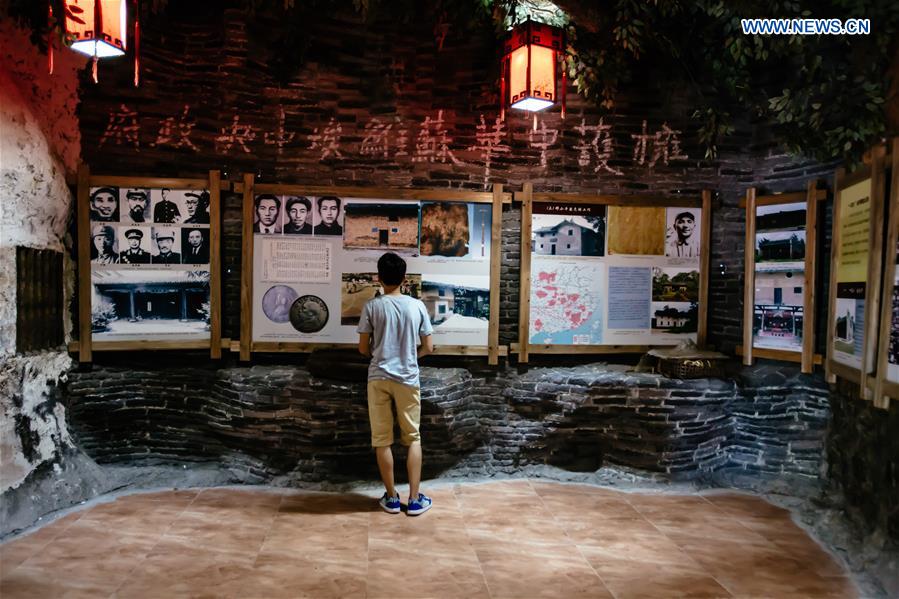
Ruijin Republic Cradle.
4. Ruijin Revolutionary Memorial Museum
This museum is a must-visit for anyone seeking a deeper understanding of the revolutionary period. The exhibits showcase artifacts, photographs, and documents from the time of the Chinese Soviet Republic, offering a comprehensive view of the challenges and triumphs faced by early communist leaders.
5. Ruijin Red Army Murals
Art lovers and history buffs alike will appreciate the vibrant murals that depict scenes from the revolutionary struggle. These artworks not only beautify the spaces they occupy but also narrate the stories of courage and resilience that defined this era.
6. Workers Peasants and Soldiers Hall of Ganzhou
This hall serves as a tribute to the key role played by workers, peasants, and soldiers in the revolutionary movement. It provides context for the social dynamics of the time and the grassroots support that propelled the Communist Party forward.
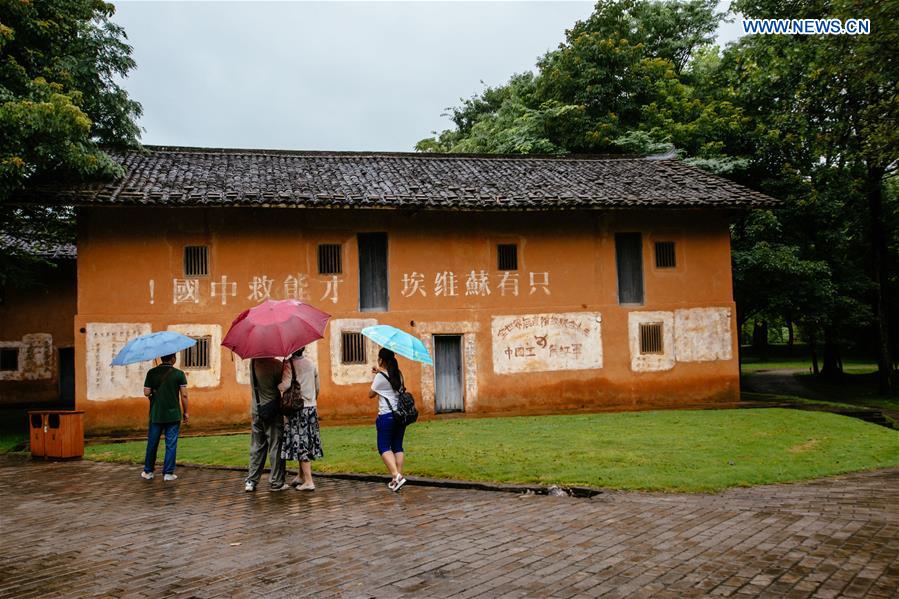
Ruijin Republic Cradle.
7. Ye Ping Site
As another historical landmark in the area, the Ye Ping Site is significant for its role in the revolutionary narrative. This site exemplifies the strategic importance of Ruijin during the early years of communist governance and is a vital piece of the puzzle in understanding the broader historical landscape.
Final Thoughts
A visit to Ruijin is more than just a trip through beautiful landscapes; it’s a profound journey into the heart of China’s revolutionary past. From the Soviet Site to the Red Well and beyond, each highlight offers a unique glimpse into the lives of those who shaped modern China. As you wander through this historical cradle, you’ll find that the stories of perseverance and hope continue to resonate, making Ruijin a truly unmissable destination for any traveler interested in China’s rich history and culture.
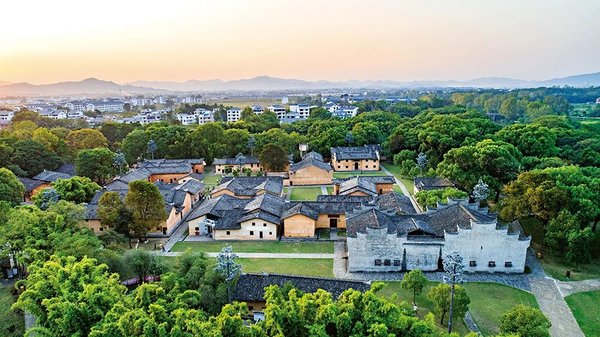
Ruijin Republic Cradle.
Planning Your Visit: A Practical Guide
Essential Information for Your Visit to the Ruijin Republic Cradle
Nestled in the heart of Jiangxi Province, Ruijin is a historic gem often referred to as the “Cradle of the Republic.” This area is a focal point for those interested in the early revolutionary history of China. Here’s everything you need to know to make the most of your visit.
Getting There
-
By Air: The nearest airport is Liancheng Airport (LCX), approximately 50 kilometers away. Alternatively, you can fly into Nanchang Changbei International Airport (KHN), which is about 250 kilometers from Ruijin. From either airport, you can take a taxi or arrange for a private transfer.
-
By Train: Ruijin is accessible via Zhudong Station. High-speed trains connect major cities in China to this region, making it a convenient option for travelers.
-
By Bus: Local buses frequently run from larger cities in Jiangxi, including Ganzhou and Nanchang, directly to Ruijin.
Best Time to Visit
The ideal times to explore Ruijin are during the spring (March to May) and autumn (September to November) months. During these periods, the weather is mild and pleasant, making it perfect for outdoor exploration of the historical sites.

Ruijin Republic Cradle.
Key Attractions
-
Soviet Site of Ruijin: This is the former site of the Central Executive Committee of the Chinese Soviet Republic. Here, visitors can explore the well-preserved buildings where pivotal historical events took place, including Mao Zedong’s presidency announcement in 1931.
-
Hongjing Revolutionary Site: A must-visit for history buffs, this site features scenic views and historical significance, including the famous “Red Well,” where you can experience the unique tradition of drawing water using a wooden bucket.
-
Ruijin Red Army Murals: These murals depict the struggles and achievements of the Red Army, offering a visual narrative of the revolutionary spirit that once thrived in this region.
-
Ruijin Revolutionary Memorial Museum: This museum houses a wealth of artifacts and exhibits related to the early Chinese Communist movement, providing context to the broader historical significance of the area.
Local Cuisine
Don’t miss the opportunity to savor local Jiangxi dishes while in Ruijin. Popular options include:
- Nanchang Rice Noodles: A flavorful dish made with fresh rice noodles, often served with a variety of meats and vegetables.
- Steamed Fish Head: A local delicacy that highlights the region’s fresh water sources.
- Jiangxi Spicy Tofu: Known for its bold flavors, this dish is both a vegetarian delight and a staple in local cuisine.

Ruijin Republic Cradle.
Accommodation
There are several options for staying in Ruijin, ranging from budget hostels to more upscale hotels. Here are a few recommended places:
- Ruijin Hotel: A comfortable option with modern amenities, located near major attractions.
- Jiangxi Red Army Hotel: A historical hotel that reflects the revolutionary spirit of the area, offering a unique atmosphere.
Tips for Travelers
-
Language: Basic English may be spoken at hotels and tourist attractions, but learning a few key Mandarin phrases can enhance your experience.
-
Cash: While digital payments are common in urban areas, it’s advisable to carry some cash, especially in smaller towns and markets.
-
Dress Code: Wear comfortable shoes and clothing suitable for walking, as many historical sites require some exploration on foot.
-
Respect Local Customs: As with many cultural sites in China, show respect for local traditions and guidelines while visiting.
In summary, Ruijin offers a captivating blend of history, culture, and natural beauty. With its rich revolutionary past and engaging sites, it is a must-visit destination for anyone interested in understanding the roots of modern China. Plan your visit today and immerse yourself in a pivotal chapter of Chinese history!
Tickets: Prices, Booking, and Tips
Visiting the Ruijin Republic Cradle: Essential Ticketing Information
Exploring the Ruijin Republic Cradle, an iconic site steeped in Chinese revolutionary history, is a must for international travelers interested in the cultural and political evolution of China. Here’s what you need to know about tickets, prices, booking, and tips to enhance your visit.
Ticket Prices
- General Admission: Approximately ¥50 (CNY) per person. This ticket grants access to the main areas of the Soviet Site of Ruijin, including the historical buildings and the scenic grounds.
- Discounted Rates: Students and seniors may be eligible for discounted tickets, typically around ¥30 (CNY). Be prepared to show valid identification to avail of these rates.
- Group Rates: If you are traveling with a group of 10 or more, inquire about group discounts at the ticket counter, which can provide significant savings.
Booking Your Tickets
- On-Site Purchase: Tickets can be purchased at the entrance of the site. It is advisable to arrive early during peak tourist seasons to avoid long lines.
- Online Booking: For added convenience, tickets can also be booked through popular travel platforms (like Trip.com or Viator). This option often allows you to skip the line and guarantees your entry on busy days.
- Guided Tours: Consider booking a guided tour that includes entry fees. These tours often provide a richer experience with knowledgeable guides who can share insights about the historical significance of the site.
Visiting Tips
- Best Time to Visit: The ideal time to explore Ruijin is during the spring (March to May) or autumn (September to November) months when the weather is mild and pleasant for walking.
- Explore Nearby Attractions: After visiting the Soviet Site, take the opportunity to see nearby landmarks such as the Ruijin Red Well and the Ruijin Revolutionary Memorial Museum. These sites offer further insights into the revolutionary period in China.
- Bring Cash: While many places now accept digital payments, it’s still wise to carry some cash, especially in rural areas where card machines may not be available.
- Dress Comfortably: The scenic area involves some walking, so wear comfortable shoes and dress appropriately for the weather. A hat and sunscreen are recommended during the summer months.
- Stay Hydrated: Bring along a water bottle, especially if you plan to spend several hours exploring the area. There are limited refreshment options on-site.
Accessibility Information
The site is generally accessible, but certain areas may present challenges for those with mobility issues. It’s best to check in advance or inquire at the information desk upon arrival for assistance.
By following these guidelines, you’ll ensure a smooth and enriching visit to the Ruijin Republic Cradle, where the echoes of history resonate through its beautifully preserved landscapes and structures.
How to Get There: A Complete Transportation Guide
Navigating Your Way to Ruijin Republic Cradle
Visiting the Ruijin Republic Cradle (赣州瑞金共和国摇篮旅游区) is an enriching experience for anyone interested in Chinese history and culture. Located in Jiangxi Province, this historical site was pivotal during the early years of the Chinese Communist Party and remains a fascinating destination for travelers.
Getting to Ruijin
1. By Air:
The nearest major airport to Ruijin is Ganzhou Huangjin Airport (KOW), located approximately 100 kilometers away. This airport serves domestic flights from major cities such as Beijing, Shanghai, and Guangzhou. From the airport:
- Taxi: The most convenient way to reach Ruijin is by taxi. It takes about 2-2.5 hours and costs roughly ¥300-¥400.
- Bus: Alternatively, you can take a bus to Ganzhou city center and then transfer to a bus heading to Ruijin. This option may take longer but is more economical.
2. By Train:
Ruijin is well-connected by train, making it accessible from various cities in Jiangxi and beyond. The closest train station is Ruijin Railway Station. Major routes include:
- From Nanchang: High-speed trains from Nanchang take around 2-3 hours to reach Ruijin.
- From Ganzhou: Regular trains operate between Ganzhou and Ruijin, taking approximately 1.5 hours.
Upon arriving at Ruijin Railway Station, you can take a taxi or local bus to your desired destination within the city.
3. By Bus:
If you prefer a more direct route, several intercity buses operate to Ruijin from various cities:
- From Ganzhou: Buses depart frequently from the Ganzhou Long-distance Bus Station to Ruijin and take about 2 hours.
- From Nanchang: Direct buses from Nanchang to Ruijin are available, typically taking around 4-5 hours.
Ensure to check the bus schedules ahead of time, as they may vary.
Local Transportation in Ruijin
Once you’re in Ruijin, getting around is relatively straightforward:
-
Taxis: Taxis are readily available and can be hailed on the street or booked via local ride-hailing apps. They are an efficient way to explore the city and surrounding historical sites.
-
Bicycles and Electric Scooters: For a more leisurely experience, consider renting a bicycle or an electric scooter. This is a great way to enjoy the scenic beauty and visit various attractions at your own pace.
-
Walking: Many of Ruijin’s historical sites are within walking distance of each other, especially in the downtown area. This allows you to soak in the local atmosphere and discover hidden gems along the way.
Tips for a Smooth Journey
-
Language: English is not widely spoken in Ruijin. It’s advisable to have essential phrases translated or use a translation app to facilitate communication.
-
Currency: Ensure you have some cash (Renminbi – RMB) on hand, as not all establishments accept credit cards.
-
Travel Apps: Download local travel apps for bus schedules, taxi bookings, and maps to enhance your travel experience.
By planning your transportation effectively, you can enjoy all that Ruijin has to offer while delving into its rich historical tapestry. Whether you’re exploring the Soviet Site or sipping water from the famous Red Well, each journey here is sure to be memorable.
Local Cuisine and Accommodation Nearby
Savoring Ruijin: Culinary Delights and Local Stays
When visiting the Ruijin Republic Cradle Tourism Area, exploring the local cuisine is as essential as delving into its rich history. The flavors of Jiangxi Province are distinctive and deeply rooted in traditional Chinese culture, offering an authentic taste of the region.
Local Cuisine
-
Jiangxi Rice Noodles (江西米粉)
A staple of the local diet, these thin rice noodles can be found in various dishes. Whether served in a hot, savory broth or stir-fried with vegetables and meats, they offer a delightful texture and flavor that showcases the region’s culinary essence. -
Stir-Fried River Shrimp (河虾炒)
Fresh river shrimp, often caught from the nearby streams, are quickly stir-fried with garlic, ginger, and seasonal vegetables. This dish highlights the local seafood bounty and is a must-try for seafood lovers. -
Braised Pork with Preserved Vegetables (梅菜扣肉)
This dish features tender pork belly slow-cooked with pickled mustard greens, creating a balance of savory and tangy flavors. It is commonly served with steamed rice and is a favorite at family gatherings. -
Crispy Fried Tofu (脆皮豆腐)
A vegetarian delight, crispy fried tofu is often paired with a spicy dipping sauce. Its crunchy exterior contrasts beautifully with the soft, fluffy interior, making it a popular appetizer. -
Local Herbal Tea (当地花草茶)
Complement your meal with a refreshing cup of local herbal tea, known for its health benefits and soothing properties. Look for varieties made with local herbs, flowers, and fruits.
Accommodation Recommendations
After indulging in the local flavors, a comfortable place to rest is essential. Here are some highly-rated accommodations near the Ruijin Republic Cradle:
-
Ruijin Hotel (瑞金酒店)
This centrally located hotel offers modern amenities and easy access to local attractions. Guests rave about the friendly staff and well-appointed rooms, making it an ideal base for exploration. -
Jiangxi Ruijin International Hotel (江西瑞金国际大酒店)
A step up in luxury, this hotel features spacious rooms with stunning views of the surrounding mountains. On-site dining options include traditional Jiangxi cuisine, allowing you to continue your culinary journey without leaving the premises. -
Shazhou Hotel (沙洲宾馆)
Located near the historical sites, Shazhou Hotel is known for its clean, comfortable rooms and convenient location. It’s an excellent choice for budget travelers looking for value without compromising comfort. -
Red Well Hostel (红井青年旅舍)
For those who prefer a more communal experience, this hostel offers dormitory-style accommodations and a friendly atmosphere. It’s a great spot to meet fellow travelers and share stories about your adventures. -
Local Guesthouses (民宿)
For a more immersive experience, consider staying at a local guesthouse. These often provide a homey atmosphere and the chance to interact with local families, giving you firsthand insight into the culture and daily life of Ruijin.
Conclusion
The Ruijin Republic Cradle Tourism Area is not just a journey through history; it’s also a feast for the senses. From savoring the unique local dishes to enjoying comfortable accommodations, your visit will be enriched with cultural experiences that linger long after your trip concludes.
Frequently Asked Questions
Frequently Asked Questions
1. What is the Ruijin Republic Cradle?
The Ruijin Republic Cradle (赣州瑞金共和国摇篮旅游区) is a significant historical site located in Jiangxi Province, China. It was the center of the Chinese Soviet Republic in the early 1930s, where Mao Zedong was elected as its president. This area includes various museums, memorials, and scenic spots that commemorate the revolutionary activities that took place here.
2. How do I get to Ruijin?
Ruijin is accessible via several transportation methods:
– By Train: The nearest major railway station is in Ganzhou, from which you can take a bus or taxi to Ruijin.
– By Bus: Long-distance buses run regularly from major cities like Nanchang and Ganzhou to Ruijin.
– By Car: If you prefer to drive, Ruijin is connected by highways and is approximately 300 kilometers from Nanchang.
3. What are the main attractions in the Ruijin Republic Cradle?
Some of the key attractions include:
– Soviet Site of Ruijin: The former headquarters of the Chinese Soviet Republic.
– Hongjing Scenic Area: Known for its beautiful landscapes and historical significance.
– Ruijin Red Well: A historic well associated with Mao Zedong and early revolutionary activities.
– Ruijin Revolutionary Memorial Museum: Offers insights into the history and impact of the revolutionary movement.
4. Is there an entrance fee for the attractions?
Most historical sites and museums in the Ruijin area have a nominal entrance fee, typically ranging from 10 to 50 RMB. However, some outdoor areas may be free to enter. It’s advisable to check specific sites in advance for current pricing and discounts.
5. Are guided tours available?
Yes, guided tours are available and can greatly enhance your understanding of the historical context. Local tour operators offer group and private tours that include transportation, a knowledgeable guide, and visits to key sites. Booking in advance is recommended during peak tourist seasons.
6. What is the best time to visit Ruijin?
The ideal time to visit Ruijin is during the spring (March to May) and autumn (September to November) months when the weather is mild and the scenery is particularly beautiful. Summer can be hot and humid, while winter temperatures can drop significantly.
7. Are there accommodations available in Ruijin?
Yes, Ruijin offers a range of accommodations, from budget hostels to comfortable hotels. Popular options include local guesthouses and hotels that cater to tourists. Booking in advance is advised, especially during national holidays and weekends.
8. What should I prepare for my visit?
When visiting Ruijin, consider the following:
– Comfortable footwear: Many attractions require walking or hiking.
– Weather-appropriate clothing: Check the weather forecast before your trip.
– Water and snacks: While there are eateries, having your own provisions can be convenient, especially in more remote areas.
– Cultural respect: Familiarize yourself with local customs, and be respectful when visiting historical sites.
Exploring the Ruijin Republic Cradle offers a profound glimpse into China’s revolutionary history and the legacy of the early Communist Party. Enjoy your visit!
Final Thoughts on Your Trip
Embrace the Legacy of Ruijin
As your journey through the Ruijin Republic Cradle comes to a close, take a moment to reflect on the profound historical tapestry woven throughout this remarkable region. Here, in Jiangxi Province, you’ve not only traversed beautiful landscapes but also walked through the very heart of modern Chinese history.
Key Takeaways from Your Visit:
-
Historical Significance: You’ve explored the sites where pivotal moments in the Chinese Soviet Republic unfolded, including the Hongjing Revolutionary Site, where Mao Zedong was elected as President in 1931. Such insights offer a deeper understanding of the revolutionary spirit that shaped contemporary China.
-
Cultural Immersion: Engaging with local traditions and stories—like lowering a wooden bucket into the famous Red Well—allows you to connect with the resilient heritage of the Chinese people. It’s experiences like these that bring history to life, transforming mere facts into personal memories.
-
Natural Beauty: The stunning scenery surrounding Ruijin, from its mountainous terrain to tranquil parks, enhances your experience, providing a serene backdrop to the historical exploration. Nature here is not just a setting; it enriches the journey and invites introspection.
-
Community and Resilience: The warmth of the locals and their pride in their history remind us of the enduring strength found in community. Each site you visited carries stories of hardship, triumph, and hope, echoing the spirit of those who came before.
As you depart, carry with you not just photographs and souvenirs, but a renewed appreciation for the complexities of history and culture. Ruijin stands as a testament to resilience and transformation—a place where the past is not merely remembered but actively shapes the future.
Final Thoughts: Consider how the stories of Ruijin resonate with the broader narrative of human endeavor. In this cradle of revolution, you have glimpsed the profound interplay between struggle and progress. May your travels inspire you to delve deeper into the rich history of the places you visit, fostering connections that transcend borders and time. Safe travels!